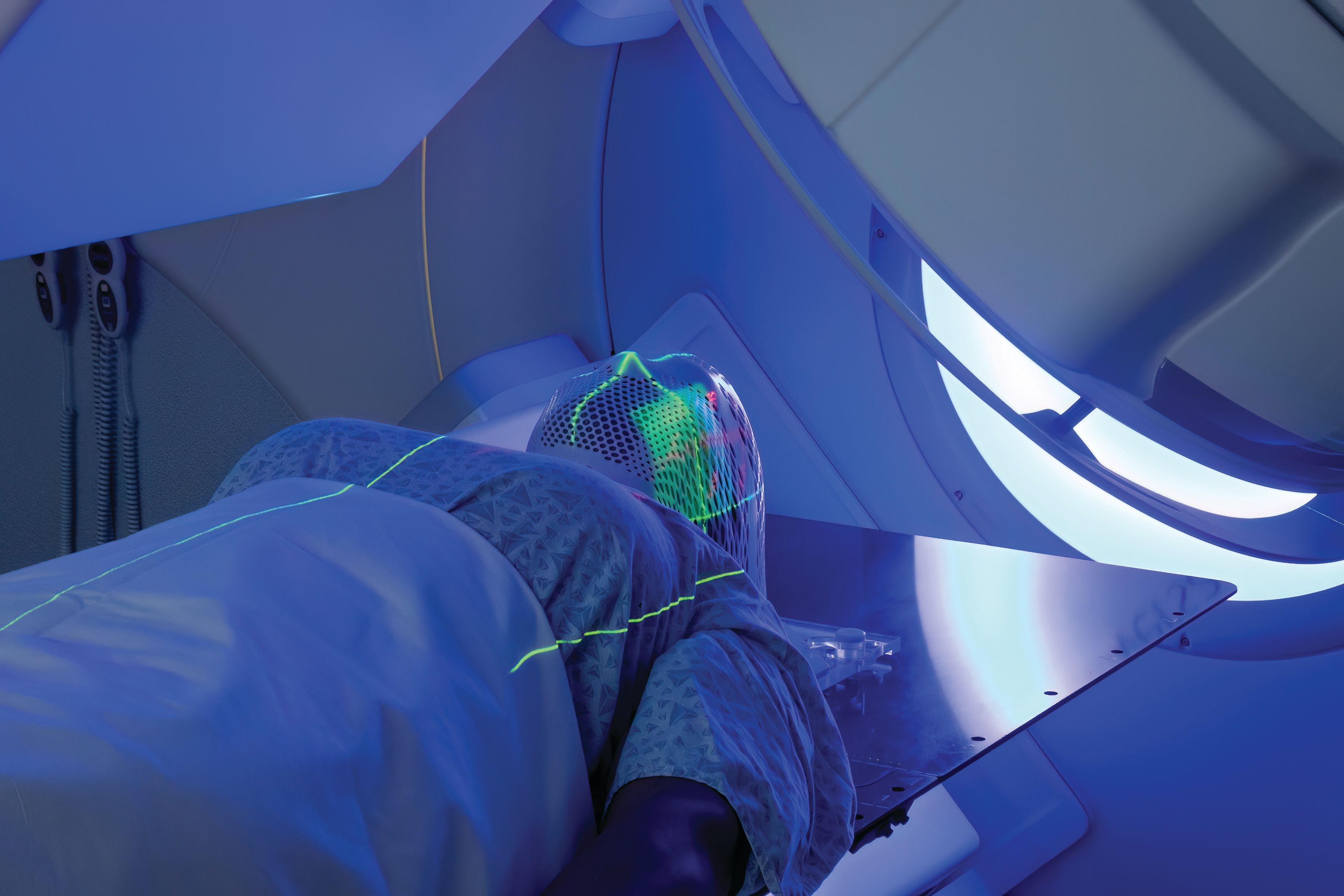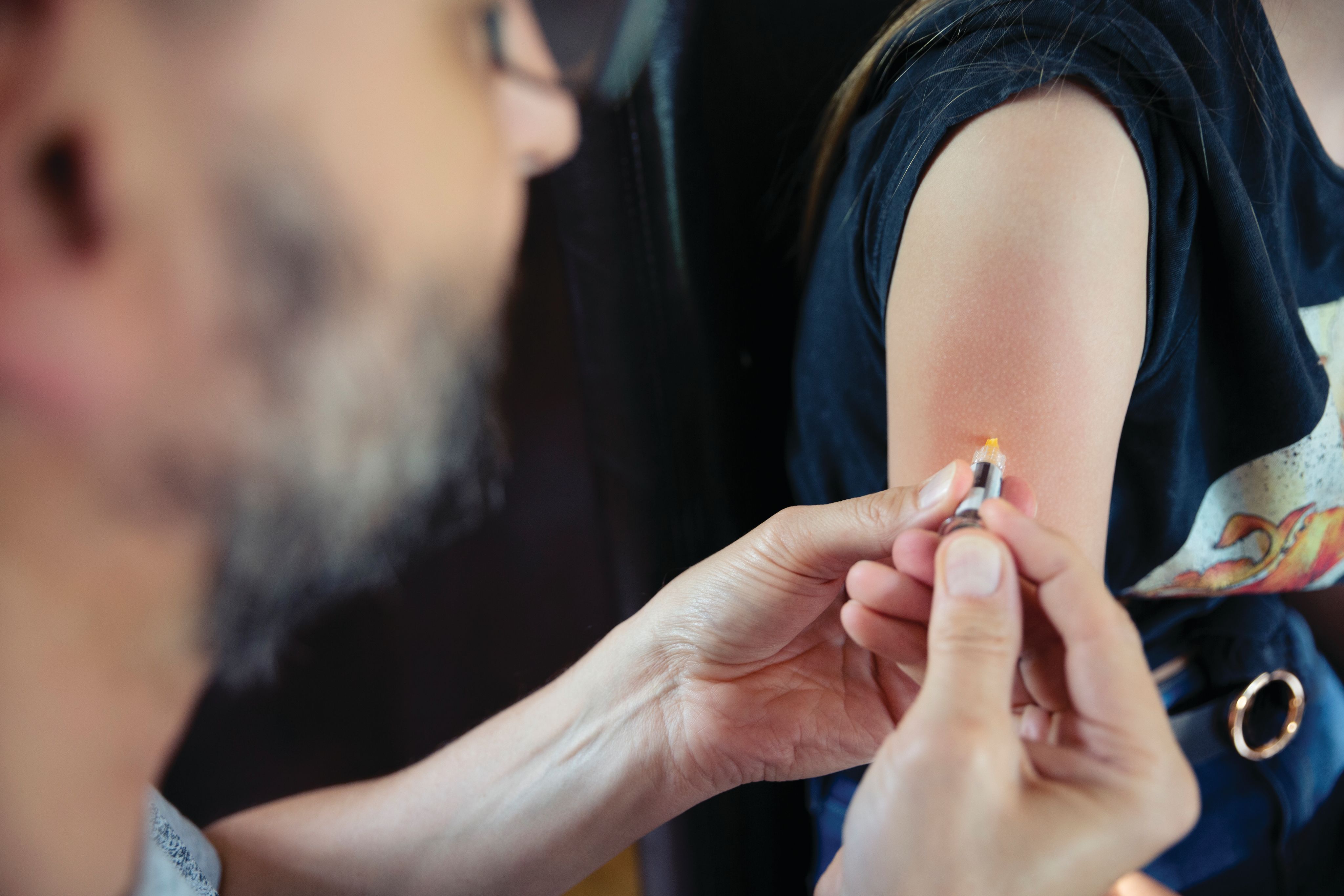Caution: head and neck cancer is presenting in a different cohort
The incidence of human papillomavirus-mediated head and neck cancers is rising rapidly, write Elizabeth Marsh, Jaymit Patel and Tamara Kahn

Human papillomavirus (HPV) is a ubiquitous virus. It is the causative agent of cervical cancer but it also causes other HPV-dependent malignancies – vulval, penile and anal cancers – which are rapidly increasing in incidence.
What is less recognised is that HPV is also associated with an alarming increase in the incidence of oropharyngeal squamous cell carcinoma (OPSCC). Despite a commitment from NHS England in November 2023 to eliminate cervical cancer by 2040 in England (interestingly, Australia is likely to achieve this by 2030), there was no mention of other HPV-mediated cancers. The lack of wide-scale preventative programmes for HPV-mediated OPSCC has resulted in the incidence of OPSCC in UK men, which is now greater than the incidence of cervical cancer in UK women1; there is a head and neck cancer (HNC) crisis already knocking at the door.
HNCs are now one of the top-10 most common cancers in the UK with HPV driving this rise in overall HNC incidence. This statistic hides nuances in the data: strikingly, they are the fifth most common cancers in men. This is a group of cancers of which the public has little awareness.
A new cohort of individuals
HPV-negative OPSCC is associated with heavy smoking and heavy alcohol consumption. Although HPV-mediated OPSCC may be associated with some of the same lifestyle behaviours, it largely reflects changing sexual behaviours. As such, cases are presenting in individuals who do not fit the historic profile and may not have any conventional risk factors.
The most significant risk factor for HPV-mediated disease is gender – as stated above, more men are diagnosed with HPV-positive OPSCC than women, and a younger cohort of men is also at risk. Crucially, unlike other HNCs, HPV-mediated OPSCCs are preventable through HPV vaccination.
Our data (pending publication) show that there are significant gender differences in the prevalence of HPV in the mouths of healthy individuals (those without HNC). We have found that men are almost twice as likely to have oral HPV than women, and over three times more likely to be infected with the high-risk cancer-causing viral type HPV16; this is the viral type that dominates HPV-mediated OPSCCs.
Men also have fewer circulating HPV antibodies2, despite an increased likelihood of infections. Although this suggests that genital infections do not offer systemic protection in men, it also highlights the differences in vaccination. Boys have only been a part of the school-based HPV vaccination programme since 2019, whereas girls have routinely been vaccinated since 2008, a programme that was also launched with a catch-up campaign, unlike the boys’ programme.
The efficacy of vaccination
HPV-mediated cancers are preventable and we should shout this from the rooftops.
HPV vaccination initially protected against two viral types – the most common cancer-causing viral types HPV16 and HPV18. Subsequently, a quadrivalent vaccine protecting against two further low-risk viral types, HPV6 and HPV11, was implemented. In September 2023, a nine-valent vaccine was introduced that requires just a single dose in school-aged children. The HPV vaccine is safe and hugely efficacious; Health Protection Scotland and the Scottish HPV Reference Laboratory are the leaders in evidencing this. Last year, the team published the news that there were no cases of invasive cervical cancer in a large cohort of women who had been vaccinated at 12 or 13 years3.
In 2019, the authors had already published that school-based vaccination reduced the risk of cervical intraepithelial neoplasia of grade three or more by 89% (95%CI = 81–94%)4. We also know that vaccination is not only protective against cervical disease but removes the vaccine viral types from circulating within the population5.
Vaccine uptake was initially excellent within the UK but has fallen considerably since the COVID-19 pandemic: coverage (as per the World Health Organization’s Immunisation Dashboard) in girls in 2019 was 84%, but fell to 67.32% in 2022 and 55.61% in 2023. Vaccination coverage in UK boys is lower: 62.38% in 2022 and 49.53% in 2023. There are multiple factors resulting in such low uptake. It is important to note that many other countries have overcome barriers to accessing the vaccine; for instance, Australia had coverage of 80.27% in girls and 76.69% in boys in 2022.
The vaccine is unlicensed for protection against OPSCCs in the UK. However, evidence is building to show that it does also offer protection for oral HPV infections6.
A call to action
Although the public may have an awareness of established risk factors for HNC, including alcohol, smoking and other tobacco-related habits, many people are not aware that an easily contracted virus can cause OPSCC. Despite decreasing rates of smoking and drinking, the incidence of HNC continues to rise, emphasising how significant HPV is in driving disease.
Knowledge of HPV and its associated diseases has been shown to be limited in the general population, although women have a higher awareness due to the links with cervical cancer, HPV vaccination and cervical screening. However, knowledge of the role of HPV in HNCs is poor among both men and women.
Self-examination is an additional way of ‘checking in’ on our oral health. The University of Derby’s awareness video for head and neck cancer and HPV talks you through the two-minute check for the early symptoms, and we recommend that this is done once a month.
Only recently has the association of HPV and OPSCC truly been established, leaving the impact of the virus in men, and across all genders, significantly underestimated. We need to explore how to better educate the general population in understanding HPV-mediated disease through greater awareness of the disease and the early symptoms. We need to push for better information and education to support the HPV vaccination programmes in schools for all young adults. We also need increased awareness among healthcare professionals of the disease, including the importance of HPV vaccines, to ensure the early diagnosis and prevention of all HPV-mediated cancers.
References
1. Lechner M, Liu J, Masterson L et al. HPV-associated oropharyngeal cancer: epidemiology, molecular biology and clinical management. Nat Rev Clin Oncol 2022; 19(5): 306-27.
2. Markowitz LE, Sternberg M, Dunne EF et al. Seroprevalence of human papillomavirus types 6, 11, 16, and 18 in the United States: National Health and Nutrition Examination Survey 2003-2004. J Infect Dis 2009; 200(7): 1059-67.
3. Palmer TJ, Kavanagh K, Cuschieri K et al. Invasive cervical cancer incidence following bivalent human papillomavirus vaccination: a population-based observational study of age at immunization, dose, and deprivation. J Natl Cancer Inst 2024; 116(6): 857-65.
4. Palmer T, Wallace L, Pollock KG et al. Prevalence of cervical disease at age 20 after immunisation with bivalent HPV vaccine at age 12-13 in Scotland: retrospective population study. BMJ 2019; 365: l1161.
5. Kavanagh K, Pollock KG, Cuschieri K et al. Changes in the prevalence of human papillomavirus following a national bivalent human papillomavirus vaccination programme in Scotland: a 7-year cross-sectional study. Lancet Infect Dis 2017; 17(12): 1293-302.
6. Mehanna H, Bryant TS, Babrah J et al. Human papillomavirus (HPV) vaccine effectiveness and potential herd immunity for reducing oncogenic oropharyngeal HPV-16 prevalence in the UK: a cross-sectional study.
Clin Infect Dis 2019; 69(8): 1296-302.
Read more




